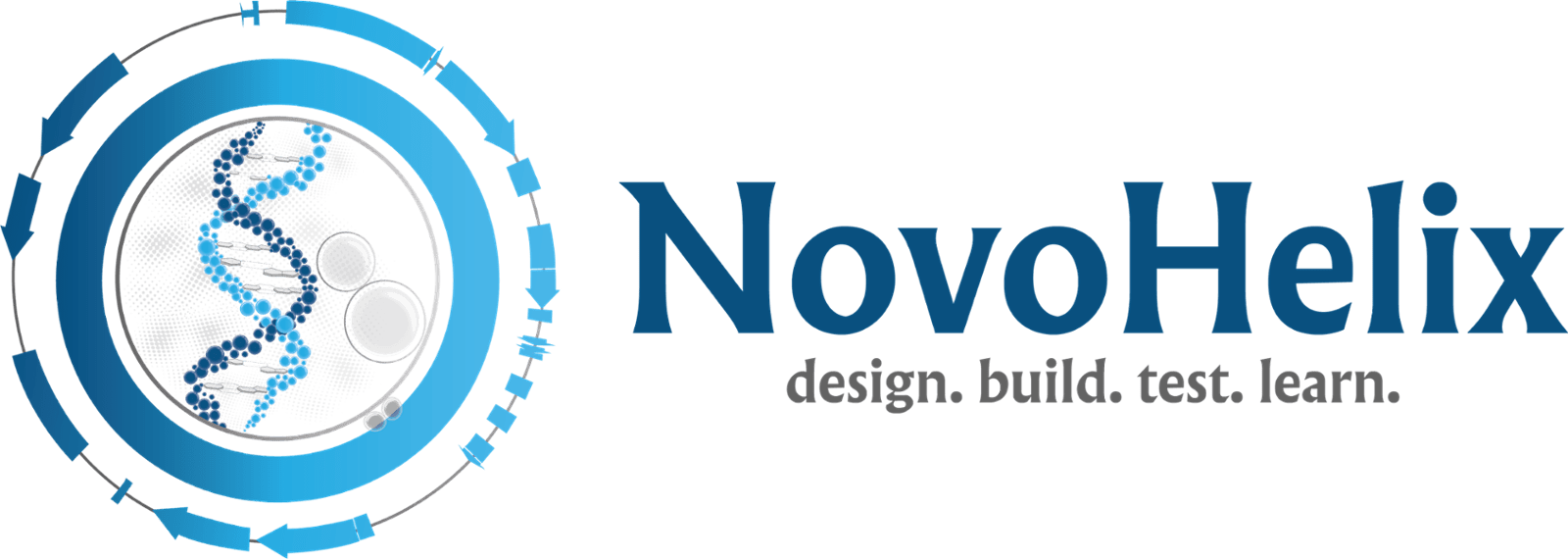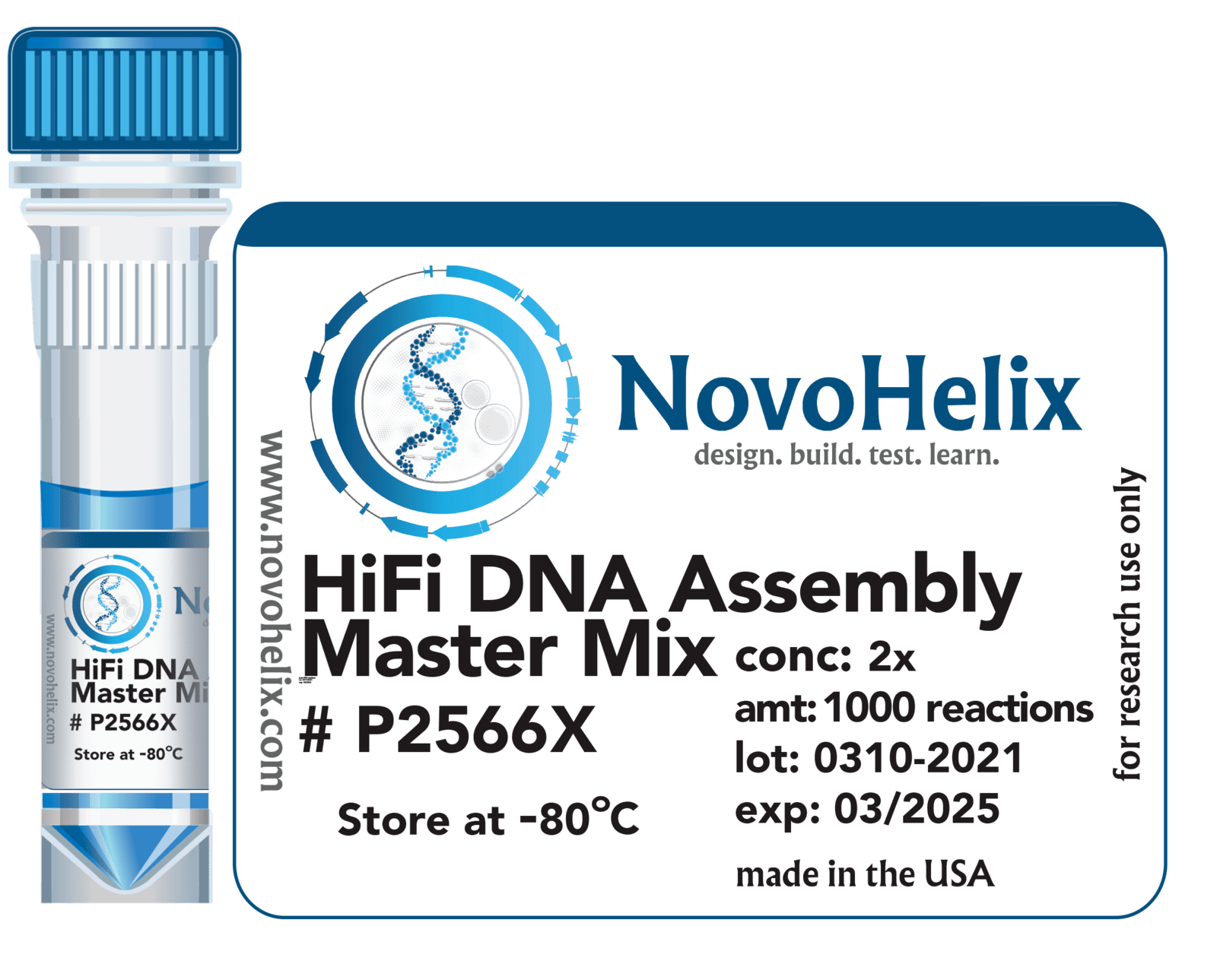NovoHelix® HiFi DNA Assembly Master Mix
NovoHelix HiFi DNA Assembly Master Mix was developed to improve the efficiency and accuracy of DNA assembly. This method allows for seamless assembly of multiple DNA fragments, regardless of fragment length or end compatibility. This method has been used to assemble either single-stranded oligonucleotides or different sizes of DNA fragments with varied overlaps (15–80 bp). It has utility for the synthetic biology community, as well as those interested in one-step cloning of multiple fragments due to its ease of use, flexibility and simple master-mix format.
Product
Catalog Nr
Size
Concentration
Pricing
Want to try this product? Request a sample of HiFi DNA Assembly Master Mix.
- Enjoy less screening/re-sequencing of constructs, with virtually error-free, high-fidelity assembly
- Join DNA fragments together more efficiently, even with larger fragments or low DNA inputs
- Use NovoHelix HiFi in successive rounds of assembly, because it removes 5´ and 3´ end mismatches. (Save time by avoiding time-consuming PCR amplification steps.)
- Bridge two ds-fragments with a synthetic ss-DNA oligo for simple and fast construction (e.g., linker insertion or gRNA library)
- Use with lower DNA input requirements
- No licensing fee requirements for NovoHelix products
- Save time with Simple and Fast Seamless Cloning
- Use one system for both "standard-size" cloning and larger gene assembly products, up to 11 fragments.
- Move on with your workflow, because DNA can be used immediately for transformation or as template for PCR or RCA.
- Adapts easily for multiple DNA manipulations, including site-directed mutagenesis.
- Primer Design
- Optimal Quantities
HiFi DNA Assembly Protocol
Recommended Amount of Fragments Used for Assembly
| 2–3 Fragment Assembly* | 4–6 Fragment Assembly** | Positive Control✝ | |
| Recommended DNA Molar Ratio | vector:insert = 1:2 | vector:insert = 1:1 | |
| Total Amount of Fragments | 0.03–0.2 pmols* X μl | 0.2–0.5 pmols** X μl | 10 μl |
NovoHelix HiFi DNA Assembly Master Mix | 10 μl | 10 μl | 10 μl |
| Deionized H2O | 10-X μl | 10-X μl | 0 |
| Total Volume | 20 μl✝✝ | 20 μl✝✝ | 20 μl |


